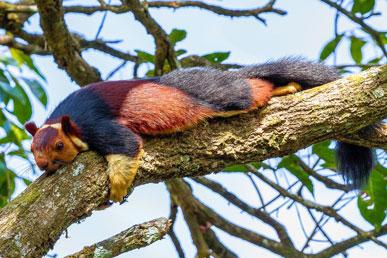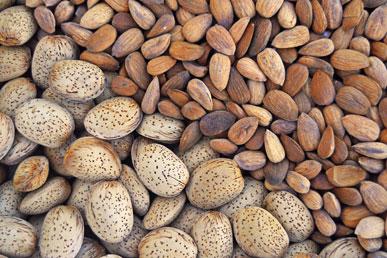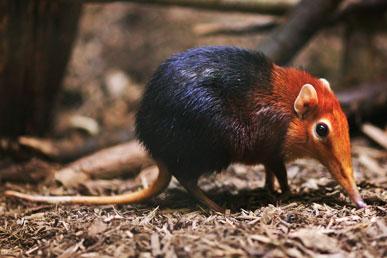The fauna of our planet will never cease to amaze us with the presence of amazing creatures of the most unusual shapes and colors. Some of them are so whimsical that it seems that nature created them in a playful mood. We present to your attention another selection of the most amazing, unusual and little-known creatures from different parts of the globe.
Crab Yeti

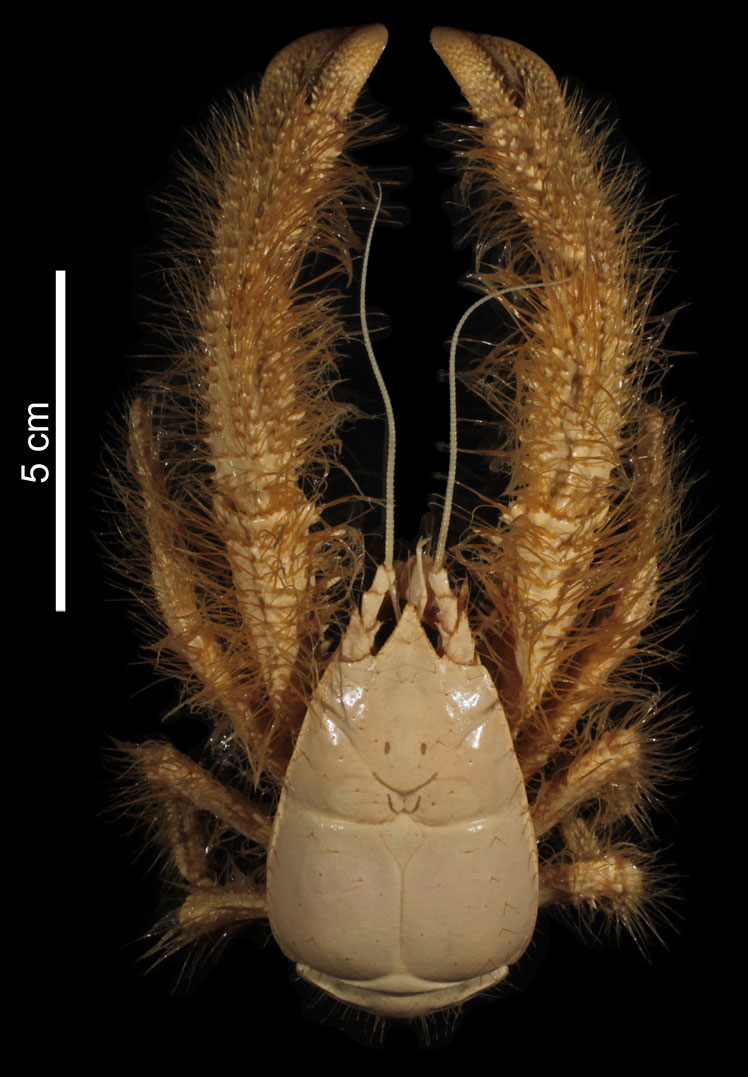
The Yeti crab (or Kiwa hirsuta or fluffy kiwa) was first discovered in 2005 at depths of over 2000 meters in the South Pacific. The discoverers dubbed it the "Yeti Lobster" or "Yeti Crab". This is because the limbs of this crustacean are covered with numerous feathery bristles, giving the impression that the cancer is covered with fur.
Yeti crabs live in deep oceans, in hydrothermal vents that are deep in the ocean. These holes provide hot water, which is the habitat of these crabs. Crabs regulate their ecosystem by using their "hairy arms" to collect toxins released from hydrothermal vents.
Kiwa hirsuta were first discovered on the South Pacific Rise 1500 km south of Easter Island in March 2005 by the research vessel Atlantis. The only specimen caught (male) was raised from a depth of 2200 meters.
In early March 2006, an article about the "Yeti crab" (Yeti crab) was published in a local newspaper, which caused an immediate media reaction around the world: after ten days, the number of mentions of the species on the Internet reached 150, and two weeks later – 200 thousand.
And in 2011, a second type of Yeti crabs, Kiwa puravida, was described. His discovery was named one of the three most important scientific events of 2011, according to a poll of readers in the journal Nature. A new species has been discovered on the seabed at a depth of 1000 meters off the coast of Costa Rica. The new species differs from the previously known one both in terms of morphology and molecular genetic data (below is its bizarre appearance).
Spotted dolphin


The Commerson's dolphin (or the spotted dolphin, sometimes called the skunk dolphin, skunk dolphin, panda dolphin) is named after Philibert Commerson, who first described these animals in 1767. These Dolphins have a very distinctive body shape. They have a black head, white throat and body; The boundaries between the two colors are very clear. Males and females are very easy to distinguish by the shape of the black spot on the abdomen: in males it resembles a tear, in females it is more rounded.
Commerson's dolphins are among the smallest cetaceans, reaching a length of only 1,3–1,7 meters and a body weight of 35–60 kg.
There are two populations of Commerson's dolphins, which are separated from each other by about 8,5 thousand km. One population is found in southern South America, along the Patagonian coast and in the Falkland Islands. The second population is located in the Indian Ocean, near the Kerguelen Islands.
Commerson's dolphins are very active animals. They have often been seen swimming quickly to the surface and jumping out of the water. They live in groups of 3-15 individuals. They are also very famous for their up-and-down swimming, which helps them track their prey better.
Food is a mixture of coastal and marine fish and squid. South American dolphins also feed on crustaceans.
In the wild, Commerson's dolphins do not live more than 10 years.
Long-nosed philodrias

The long-nosed philodrias (or Argentinean philodrias) is the largest representative of its genus (Philodrias), it reaches 150–180 cm in length. A small oblong head has a solitary "nose". The color of these snakes varies greatly: they are usually green, but blue and brown colors are also found. In this case, the pattern can be one-color or with black longitudinal stripes.
The Argentine Philodrias is found in Argentina, Bolivia, and Paraguay. It lives in forests and forest savannahs.
The long-nosed philodrias is an exclusively tree snake, active during the day. The species is generally not aggressive. When disturbed, it releases a foul-smelling substance from the cloaca. Snakes feed on small mice, lizards and amphibians. The poison is not strong, but it can cause local swelling, accompanied by a slight burning sensation and slight local bleeding.
Nambat



Nambat (or marsupial anteater, or anteater) is one of the most beautiful marsupials in Australia: it is colored grayish-brown or reddish. The hair on the back and upper thighs is covered with 6-12 white or cream stripes.
The marsupial anteater forms 2 subspecies: Western nambat and Red numbat.
The dimensions of this marsupial are small: the body length is 17–27 cm, the tail is 13–17 cm. The weight of an adult animal is 280–550 g; males are larger than females.
The nambat lives in the southwest of Western Australia. Inhabits mainly eucalyptus and acacia forests and dry woodlands.
The animal feeds almost exclusively on termites, less often on ants. It eats other invertebrates only occasionally. It is the only marsupial that feeds only on social insects; in captivity, the marsupial anteater eats up to 20 termites daily. Nambat searches for food with the help of its extremely acute sense of smell. With the claws of its front paws, it digs up the soil or breaks rotten wood, then it catches termites with a sticky tongue. Nambat swallows prey whole or slightly chewed chitin shells.
Interesting fact
During the meal, the nambat does not pay any attention to the surroundings at all. At such moments, you can stroke it or even pick it up.
Nambat is quite agile, can climb trees; at the slightest danger hides in a shelter. He spends the night in secluded places (shallow burrows, hollows of trees) on a litter of bark, leaves and dry grass.
His sleep is very deep, similar to suspended animation. There are many cases when people, along with deadwood, accidentally burned nambats, who did not have time to wake up. Except for the breeding season, marsupial anteaters keep alone, occupying an individual territory of up to 150 hectares. When caught, the nambat does not bite or scratch, but only whistles or grumbles abruptly.
In connection with the economic development and clearing of land, the number of marsupial anteater has sharply decreased. This animal is included in the lists of the International Red Book with the status of "disappearing".
Hornbill




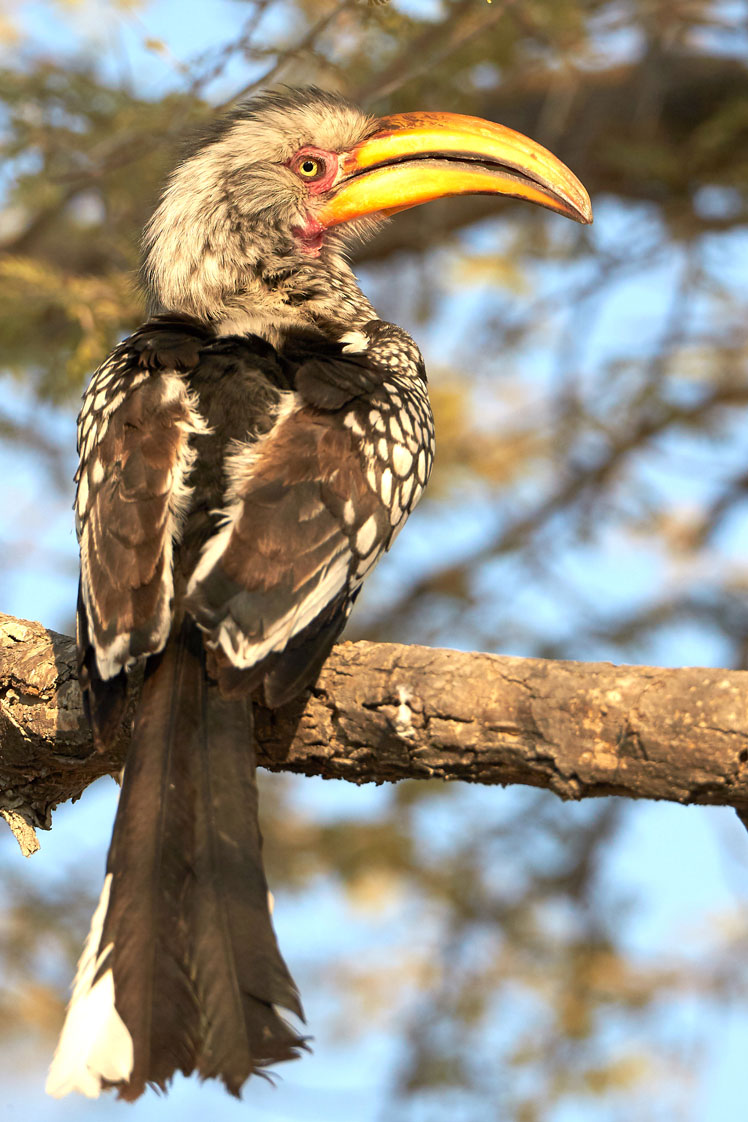

Hornbills got their name because of the large long beaks, sharply bent down and having significant outgrowths of various shapes at their base, although representatives of one genus (genus Toki) from this family have no outgrowths on the beak. The family of hornbills includes 59 species that live in Africa, South and Southeast Asia, on the islands of the Pacific and Indian Oceans. All hornbills are very similar to each other in their way of life, but in other respects they are extremely diverse.
The sizes of hornbills vary from 30 cm in the smallest representative – small current, to 1,2 m in the Kaffir horned raven. Differences in weight from 60 g to 6 kg respectively. Despite this range, hornbills are mostly large stocky birds.
They fly very high (much higher than the tallest trees) with their necks stretched forward and their heads slightly tilted down. The flight of representatives of this family is rarely long, although despite this they are able to fly quite long distances.
Interesting fact
During the flight, hornbills create a strong characteristic noise with their wings, similar to the sound of an approaching train.
They nest in natural hollows. They always live in dense, tall forests and spend most of their time in trees, with the exception of horned ravens, which inhabit open spaces with sparse shrubs. Different species tend to occupy different ecological niches, which allows hornbills to live in the same territories.
Hornbills are secretive and at the same time noisy birds. They rarely appear in cultivated areas, preferring virgin forests. Smaller species often fly in flocks of 10–20 birds, especially in winter, while larger species usually fly in pairs.
Hornbills are omnivorous, with diets varying from completely carnivorous to almost completely frugivorous. Food consists of insects, small vertebrates, lizards, mollusks, all kinds of berries, fruits, roots of some plants and grains. Small species mainly prefer insects, large species mainly eat fruits. Probably due to the fact that the fruits must be obtained from thin branches, large species of hornbills have relatively long beaks.
Bonus: The mongoose flirts with the hornbill while pretending to be dead
Hornbills have been known to eat vertebrates the size of baby mongooses. However, these brave baby mongooses do not seem to be afraid of this potential predator.
Mongooses are said to lie on their backs to invite another mongoose to fight. And although it may seem that this mongoose is playing dead, he is most likely trying to lure the hornbill to play with him. Both behaviors (both mongoose and hornbill) are incredibly novel and also incredibly fun.
We also recommend:
◆The most bizarre creatures on the planet (part 35)



